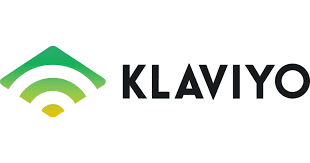Welcome to the ultimate guide for choosing the best email marketing tool in 2024. In this comprehensive article, we’re putting two heavyweights in the email marketing arena, HubSpot Email Marketing and Klaviyo, head-to-head. Whether you’re a seasoned marketer, a budding entrepreneur, or just curious about the latest in email marketing tools, this article is crafted for you. We aim to break down complex features into simple, actionable insights. So, let’s dive in and start our detailed comparison.
| HubSpot Email Marketing | Klaviyo |
|---|---|
 |  |
| G2 Score – 4.4 out of 5 stars | G2 Score – 4.6 out of 5 stars |
| TrustRadius Score – 8.5 out of 10 | TrustRadius Score – 9.0 out of 10 |
User Experience and Interface: Navigating With Ease
In the world of email marketing, the ease of use and intuitiveness of the platform can be a game-changer. Let’s see how HubSpot and Klaviyo fare in terms of user experience and interface.
HubSpot Email Marketing: Simplifying the Complex
HubSpot is known for its comprehensive approach, offering a full suite of marketing tools. But what stands out is how it manages to keep the user experience straightforward. When you log into HubSpot, you’re greeted with a clean, organized dashboard. Navigating through different features is intuitive, even for those new to the platform.
The email creation process in HubSpot is streamlined thanks to its drag-and-drop editor. This feature allows anyone, regardless of technical skill, to create professional and visually appealing emails. The editor is not just about aesthetics; it’s about ease of use. Adding elements like calls-to-action, images, and customizing layouts to fit your brand’s style is a breeze.
However, HubSpot’s extensive feature set can be a bit overwhelming at first. The platform offers a vast array of tools beyond email marketing, and while they integrate seamlessly, it can take some time to fully grasp their capabilities.
Klaviyo: Designed for E-commerce Efficiency
Klaviyo, on the other hand, takes a more focused approach. It is specifically designed for e-commerce businesses, and this focus is evident in its user interface. The platform offers a clean and uncluttered dashboard, with easy access to key features like email automation, list segmentation, and campaign performance.
The email builder in Klaviyo is also user-friendly, equipped with a drag-and-drop functionality. It provides various templates tailored to e-commerce needs, such as product recommendations and abandoned cart emails. These templates not only speed up the email creation process but also ensure that the emails are optimized for conversion.
One aspect where Klaviyo really shines is its integration with e-commerce platforms like Shopify and Magento. This integration streamlines the workflow, allowing for seamless import of product data and customer information into your email campaigns.
In terms of user experience and interface, both HubSpot and Klaviyo offer intuitive platforms, but with different focal points. HubSpot provides a comprehensive, all-in-one marketing suite with a gentle learning curve, while Klaviyo offers a streamlined, e-commerce-centric platform that makes email marketing efficient and effective.
Email Automation and Personalization: Crafting Targeted Campaigns
A key aspect of modern email marketing is the ability to automate and personalize campaigns, ensuring that the right message reaches the right person at the right time. Let’s compare how HubSpot and Klaviyo handle these crucial features.
HubSpot Email Marketing: Advanced Automation with a Personal Touch
HubSpot excels in offering sophisticated email automation capabilities. Its strength lies in its ability to create detailed, custom workflows based on a variety of triggers and conditions. This could include user behaviors such as website visits, email interactions, or form submissions. These triggers can initiate actions like sending a personalized follow-up email, segmenting a contact into a new list, or even notifying a sales team.
What truly sets HubSpot apart is its deep integration with its CRM platform. This integration allows for highly personalized email content based on a comprehensive view of each contact’s interactions with your business. You can tailor emails based on a contact’s previous purchases, page views, or engagement with past emails, making each communication highly relevant.
However, the advanced nature of HubSpot’s automation features might seem daunting, especially to those new to email marketing or with limited time to delve into complex workflows.
Klaviyo: E-commerce Focused Automation
Klaviyo’s approach to email automation is laser-focused on e-commerce. It provides powerful automation options that are easy to set up and are specifically designed to drive sales. With Klaviyo, you can create automated email sequences for scenarios like welcome emails, cart abandonment, and post-purchase follow-ups, which are critical for e-commerce success.
Personalization in Klaviyo is driven by its strong data analytics capabilities. It allows you to segment your audience based on shopping behavior, order history, and interaction with previous emails. This level of segmentation enables highly targeted and personalized email campaigns, increasing the likelihood of conversion.
Klaviyo also integrates seamlessly with major e-commerce platforms, using customer data to automate and personalize emails in real-time. This ensures that your marketing messages are always relevant and timely.
In the realm of email automation and personalization, HubSpot offers a more comprehensive, all-encompassing approach, suitable for a wide range of businesses. Klaviyo, with its focus on e-commerce, provides specialized automation features that are particularly effective for online retailers.
Analytics and Performance Tracking: Measuring Campaign Success
A crucial part of any email marketing strategy is the ability to track and analyze the performance of your campaigns. This helps in understanding what works and what needs improvement. Let’s delve into how HubSpot and Klaviyo offer insights through their analytics and performance tracking features.
HubSpot Email Marketing: Comprehensive Analytics for Informed Decisions
HubSpot provides in-depth analytics that go beyond just open and click rates. Its dashboard offers a holistic view of your email campaign performance, including how your emails influence conversions and contribute to broader marketing goals. You can track the customer journey from the first email interaction to the final conversion, which is invaluable for understanding the effectiveness of your campaigns.
Additionally, HubSpot’s integration with its CRM enables you to see the impact of your email marketing efforts on your sales pipeline. This level of insight helps in fine-tuning your strategies to not just engage your audience but also drive tangible business growth.
However, the sheer depth and breadth of data available in HubSpot might be overwhelming for some, especially smaller teams without dedicated analytics resources.
Klaviyo: Targeted Analytics for E-commerce
Klaviyo’s analytics are tailored to the needs of e-commerce businesses. It offers detailed insights into how your emails are driving sales, with metrics like revenue per recipient and purchase attribution. This focus on sales-related metrics is particularly useful for e-commerce businesses that need to directly link email marketing efforts to revenue.
Klaviyo also provides real-time data, allowing you to quickly gauge the effectiveness of your campaigns and make adjustments as needed. Its dashboard is designed to be user-friendly, presenting data in an easy-to-understand format, which is great for marketers who need to make quick, data-driven decisions.
While Klaviyo’s analytics are robust for e-commerce, businesses looking for broader marketing insights might find them less comprehensive compared to HubSpot.
HubSpot offers more detailed and wide-ranging analytics, making it suitable for businesses that need an in-depth understanding of their marketing efforts. Klaviyo, with its e-commerce-focused analytics, provides actionable insights specifically for online sales, making it ideal for e-commerce businesses.

Related: Check out our free SEO suite

Integration Capabilities: Enhancing Your Marketing Ecosystem
In the digital age, the effectiveness of an email marketing tool is greatly enhanced by its ability to integrate with other applications and services. Let’s compare HubSpot and Klaviyo in terms of their integration capabilities and how they can amplify your marketing efforts.
HubSpot Email Marketing: A Hub of Integrations
HubSpot stands out for its extensive integration capabilities. As a comprehensive marketing platform, it offers seamless integration with a vast array of tools and services, encompassing CRM systems, social media platforms, content management systems, and various others. The HubSpot App Marketplace hosts a plethora of integrations, providing solutions for virtually every marketing need.
These integrations allow for a unified marketing approach, enabling data to flow seamlessly between HubSpot and other platforms. This interconnectedness ensures that all aspects of your marketing strategy are aligned and informed by consistent data, enhancing efficiency and effectiveness.
However, the sheer number of integrations and the complexities involved in setting them up can be daunting, particularly for smaller businesses or those with limited technical expertise.
Klaviyo: Focused Integrations for E-commerce
Klaviyo’s integration ecosystem is laser-focused on e-commerce. It offers direct integrations with popular e-commerce platforms like Shopify, WooCommerce, and Magento. These integrations are designed to enhance e-commerce marketing, allowing for easy import of product data, customer purchase histories, and other relevant information into your email campaigns.
While Klaviyo’s range of integrations is more limited compared to HubSpot, they are highly relevant and beneficial for e-commerce businesses. The integrations are generally straightforward to set up and use, ensuring that even those without extensive technical knowledge can leverage them effectively.
In the domain of integrations, HubSpot offers a broader range of options and excels in creating a comprehensive, integrated marketing ecosystem. Klaviyo, on the other hand, provides key integrations that are specifically beneficial for e-commerce businesses, focusing on simplicity and direct impact on sales.
Customer Support and Resources: Ensuring a Smooth Marketing Journey
The level and quality of customer support and educational resources provided by an email marketing platform can greatly influence user experience and success. Let’s assess how HubSpot and Klaviyo support their users through customer service and learning materials.
HubSpot Email Marketing: Extensive Support and Rich Educational Content
HubSpot is renowned for its comprehensive customer support and extensive educational resources. Users have access to a wide range of support options, including email, phone, and live chat. Additionally, HubSpot’s knowledge base is extensive, offering detailed guides, how-to articles, and FAQs.
A standout feature of HubSpot’s support system is the HubSpot Academy. It offers in-depth courses, certifications, and training materials not only on using HubSpot tools but also on broader marketing topics. This educational content is invaluable for businesses looking to deepen their marketing expertise.
However, it’s worth noting that some advanced support services might be available only with higher-tier plans, which could be a consideration for smaller businesses.
Klaviyo: Targeted Support with a Focus on E-commerce
Klaviyo provides effective and responsive customer support, with options such as email and live chat. The platform’s focus on e-commerce is reflected in its support, with a team knowledgeable in both email marketing and e-commerce challenges.
In terms of educational resources, Klaviyo offers a variety of guides, tutorials, and webinars, mostly centered around e-commerce email marketing. These resources are tailored to help users maximize the effectiveness of their email campaigns specifically in the e-commerce context.
While Klaviyo’s support and educational materials are robust, they may not offer the same breadth as HubSpot, particularly in areas outside e-commerce.
In the realm of customer support and resources, HubSpot offers a more comprehensive approach, ideal for businesses seeking extensive support and a wide range of learning materials. Klaviyo provides targeted support and educational content, focusing on the specific needs of e-commerce businesses.
Pricing and Value for Money: Balancing Cost and Features
When choosing an email marketing tool, balancing the cost against the features and value you receive is essential. Let’s take a closer look at the pricing structures of HubSpot and Klaviyo to understand which offers better value for your investment.
| HubSpot Email Marketing | HubSpot’s email marketing tool is part of the HubSpot Marketing Hub, which offers the following plans: Free Tools: Basic email marketing features with HubSpot branding. Starter Plan: Starting at $45/month, includes email marketing, ad management, landing pages, forms, and more. Professional Plan: Starting at $800/month, offers advanced marketing automation, smart content, and A/B testing. Enterprise Plan: Starting at $3,200/month, adds features like adaptive testing, advanced reporting, and custom event triggers. |
| Klaviyo | Free Plan: Allows up to 250 contacts and 500 email sends, with Klaviyo branding on emails. Email Plans: Pricing starts based on the number of contacts. For example, for up to 500 contacts, the cost is around $20 per month. Includes email and SMS capabilities, segmentation, and automation. Pricing scales with the number of contacts. SMS and Email Combined Plans: Offers combined packages for businesses that want to use both email and SMS marketing. Pricing is based on the number of contacts and SMS messages sent. |
HubSpot Email Marketing: Premium Features at a Premium Price
HubSpot operates on a tiered pricing model, catering to a range of business sizes and needs. Its pricing is reflective of its comprehensive feature set, including email marketing, CRM, and other marketing tools. Even the basic plans come packed with a substantial number of features, making it a significant value proposition.
However, HubSpot can be considered a premium option, especially as you move up to its more advanced plans. These higher-tier plans unlock additional features such as enhanced automation and deeper analytics. For businesses looking for an all-encompassing marketing platform and willing to invest in it, HubSpot offers great value. But for those focusing solely on email marketing, especially smaller businesses, the cost might be a bit steep.
Klaviyo: Tailored Pricing for E-commerce
Klaviyo’s pricing is particularly tailored for e-commerce businesses. It offers a flexible pricing structure based on the number of contacts in your email list and the number of emails sent. This makes it a scalable option for e-commerce businesses of all sizes.
One of the key advantages of Klaviyo’s pricing model is its scalability. As your business and email list grow, you can adjust your plan accordingly. For small to medium-sized e-commerce businesses, Klaviyo presents a cost-effective solution with a solid set of e-commerce-specific features.
While Klaviyo is generally more affordable than HubSpot, especially for smaller lists, the cost can increase significantly as your list grows, which is something to consider as your e-commerce business expands.
In terms of pricing and value for money, HubSpot and Klaviyo cater to different segments. HubSpot is a more comprehensive, premium-priced solution suitable for businesses that require a wide range of marketing tools. Klaviyo offers a more budget-friendly, e-commerce-focused alternative, ideal for online retailers looking for a scalable email marketing solution.
Conclusion
In conclusion, HubSpot and Klaviyo both offer strong, but distinct, email marketing solutions for 2024. HubSpot stands out as an all-in-one marketing powerhouse, ideal for businesses seeking a comprehensive suite of marketing tools beyond just email marketing. Its integration capabilities, advanced automation, and extensive analytics make it suitable for businesses looking to invest in a robust marketing platform.
On the other hand, Klaviyo shines as an e-commerce-focused tool, offering targeted features and integrations tailored to online retailers. Its scalable pricing model and effective automation capabilities make it a go-to choice for e-commerce businesses of all sizes, looking for a tool that aligns closely with their sales and marketing goals. Ultimately, the choice between HubSpot and Klaviyo should be based on your specific business needs, budget, and marketing objectives. Whether you prioritize a broad range of features or e-commerce-specific functionalities will guide your decision to choose the best email marketing tool for your business in 2024.
Read Next
- ConvertKit vs Mad Mimi: The Best Email Marketing Tool for 2024
- ConvertKit vs SendPulse: The Best Email Marketing Tool for 2024
- ConvertKit vs MoonMail: The Best Email Marketing Tool for 2024
- ConvertKit vs Emma: The Best Email Marketing Tool for 2024
- ConvertKit vs VerticalResponse: The Best Email Marketing Tool for 2024






















Comments are closed.